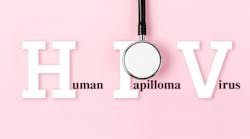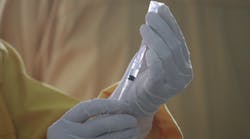Echosens urges increased vigilance around liver health during May 2020 Hepatitis Awareness Month, and calls attention to the millions of Americans from all walks of life who are living with the most common causes of viral hepatitis: hepatitis B virus (HBV) and hepatitis C virus (HCV). The need for point-of-care examinations, monitoring and ongoing assessment of liver fat and stiffness as provided by FibroScan is critical to identifying individuals who are asymptomatic and undiagnosed for liver damage.
Lynn Seim, MSN, RN, executive vice president and CEO of American Liver Foundation, said, “With the CDC calling for universal hepatitis C screening at least once in the lifetime of all individuals 18 and older, as well as testing pregnant women once during each pregnancy, it is incumbent upon providers, payers and public health partners to strengthen their efforts to shed light on this hidden epidemic. Together, we are raising awareness of viral hepatitis and the serious liver health consequences resulting from undiagnosed and untreated disease. We encourage priority populations to get tested, underscore the importance of vaccination for hepatitis B, support testing for hepatitis B and C, and emphasize the availability of effective care and curative treatment.”
New data from the CDC reveal that the annual rates of hepatitis C infection tripled between 2009-2018 and was highest among those in their 20s and 30s. In 2018, millennials and baby boomers made up more than two-thirds of all infected individuals. Those in their 20s experienced a 300 percent increase in HCV rates since 2009, while those in their 30s saw a 400 percent spike in cases. At the same time, only about 61 percent of HCV-positive individuals between 2015-2018 knew that they were infected.
Non-alcoholic fatty liver disease (NAFLD) affects 1:3 Americans. Studies show that liver disease accounts for approximately two million deaths per year worldwide and, with the growing epidemic of obesity and Type 2 diabetes mellitus, the burden of NAFLD is expected to proliferate. Moreover, NAFLD poses an increasing risk to Americans living with hepatitis B. Recent data suggests that as people age, a great number of these patients are presenting with advancing liver disease, the result of co-morbid conditions complicating care.
Jon Gingrich, CEO, Echosens North America, explains, “These data reinforce the need to monitor liver health in people living with viral hepatitis. While there are effective cures for hepatitis C infection, they don’t cure liver disease.”
One study on how NAFLD impacts patients treated and cured for hepatitis C infection found that NAFLD identified in patients prior to treatment persisted after curing their HCV infection. Among those with NAFLD before treatment, 6.25 percent still had significant liver scarring after their HCV infection was cured.
“With the high prevalence of NAFLD among the baby-boomer population, we believe that FibroScan can be an important assessment and monitoring tool for those living with viral hepatitis, as well as those cured of the virus,” continues Gingrich. “FibroScan is non-invasive technology that quickly provides a quantitative assessment of liver fat and stiffness at the point of care before NAFLD becomes symptomatic.”





